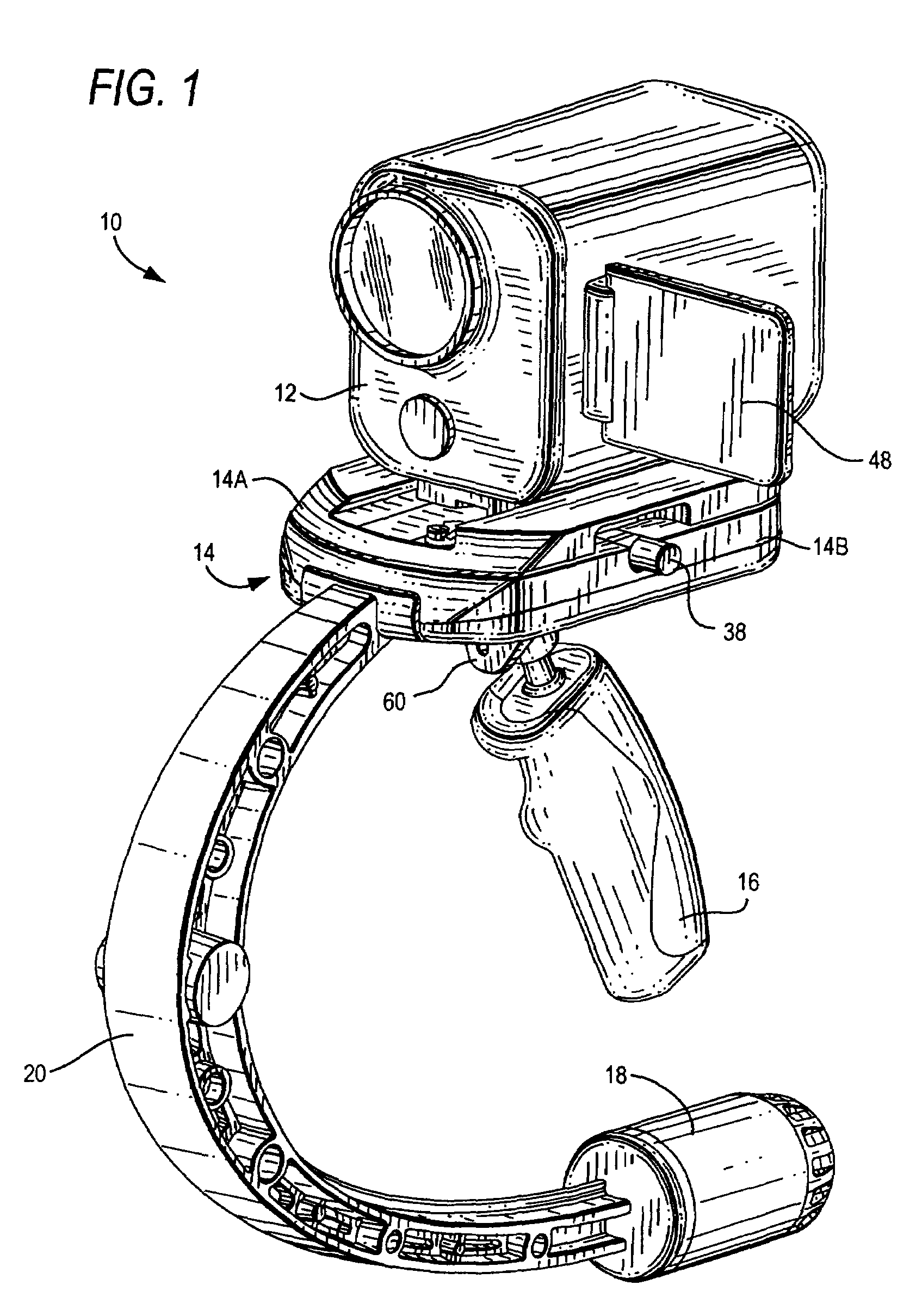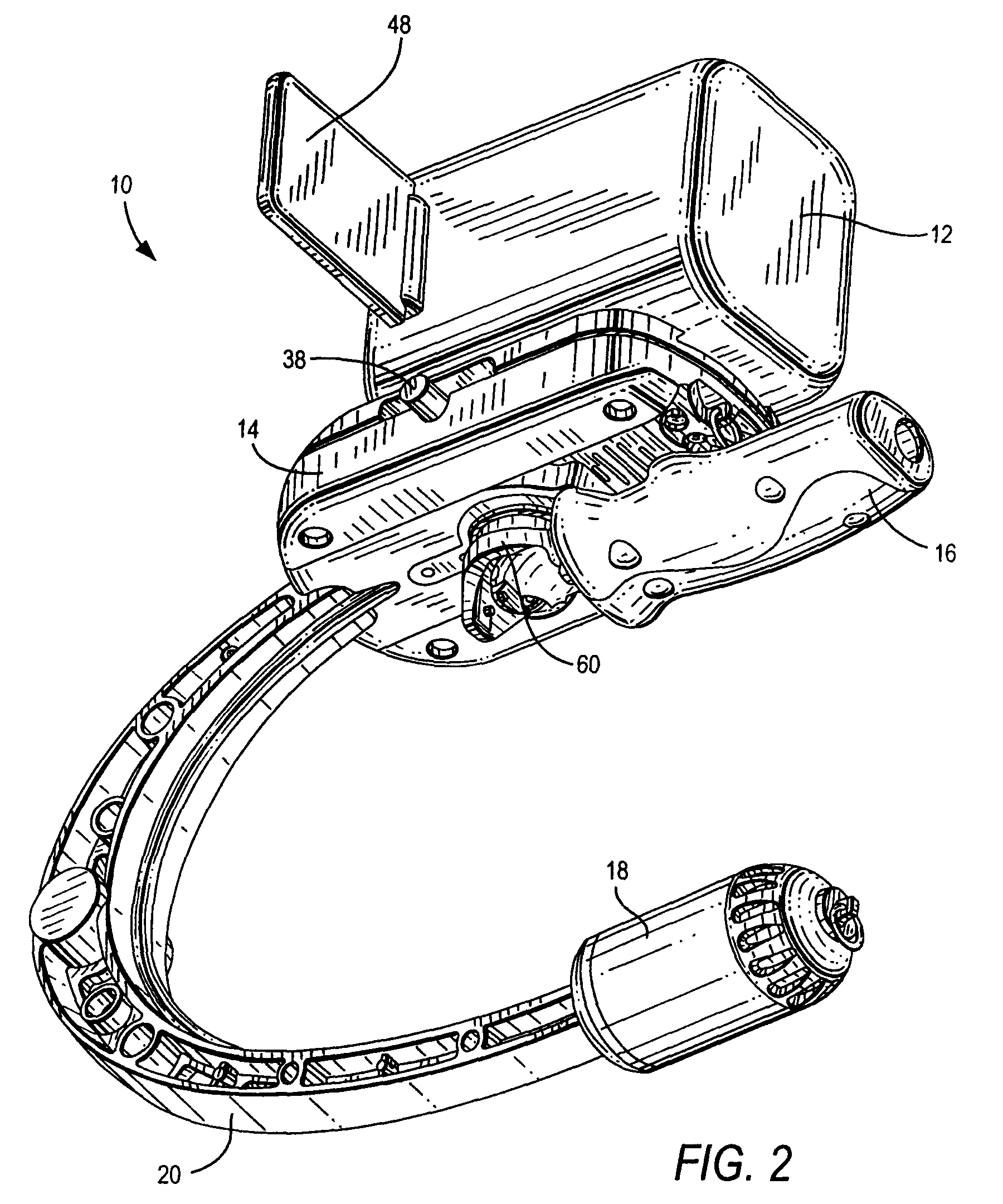Stabilized equipment support and method of balancing same
a technology of equipment support and stabilization, which is applied in the direction of machine support, television system, instruments, etc., can solve the problems of unsatisfactory approaches, undesirable motions of the camera along the pan and/or tilt and/or roll axes, and the equipment weight is low
- Summary
- Abstract
- Description
- Claims
- Application Information
AI Technical Summary
Benefits of technology
Problems solved by technology
Method used
Image
Examples
Embodiment Construction
[0039]Referring now to the drawings, reference numeral 10 generally identifies a stabilized support for supporting motion-sensitive equipment 12, especially an ultra-lightweight still or video, digital camera, and for isolating the equipment 12 from unwanted motion. As shown in FIGS. 1-2, the stabilized support 10 includes a hollow platform 14 on which the equipment 12 is mounted, and a structure on which the platform 14 is detachably mounted. The structure includes a handle 16 for holding by a human operator, an adjustable counterweight 18 mounted below the platform 14, and an arcuate arm 20 having discrete weights therealong for connecting the handle 16 with the counterweight 18. A plurality of ballast weights 22, as best seen in FIG. 3, is supported by the platform 14 to balance the support 10 about a center of gravity. The ballast weights 22 not only add weight to an upper portion of the support 10, but also add rotational stability, and thus compensate for the very low weight o...
PUM
 Login to View More
Login to View More Abstract
Description
Claims
Application Information
 Login to View More
Login to View More - R&D
- Intellectual Property
- Life Sciences
- Materials
- Tech Scout
- Unparalleled Data Quality
- Higher Quality Content
- 60% Fewer Hallucinations
Browse by: Latest US Patents, China's latest patents, Technical Efficacy Thesaurus, Application Domain, Technology Topic, Popular Technical Reports.
© 2025 PatSnap. All rights reserved.Legal|Privacy policy|Modern Slavery Act Transparency Statement|Sitemap|About US| Contact US: help@patsnap.com



